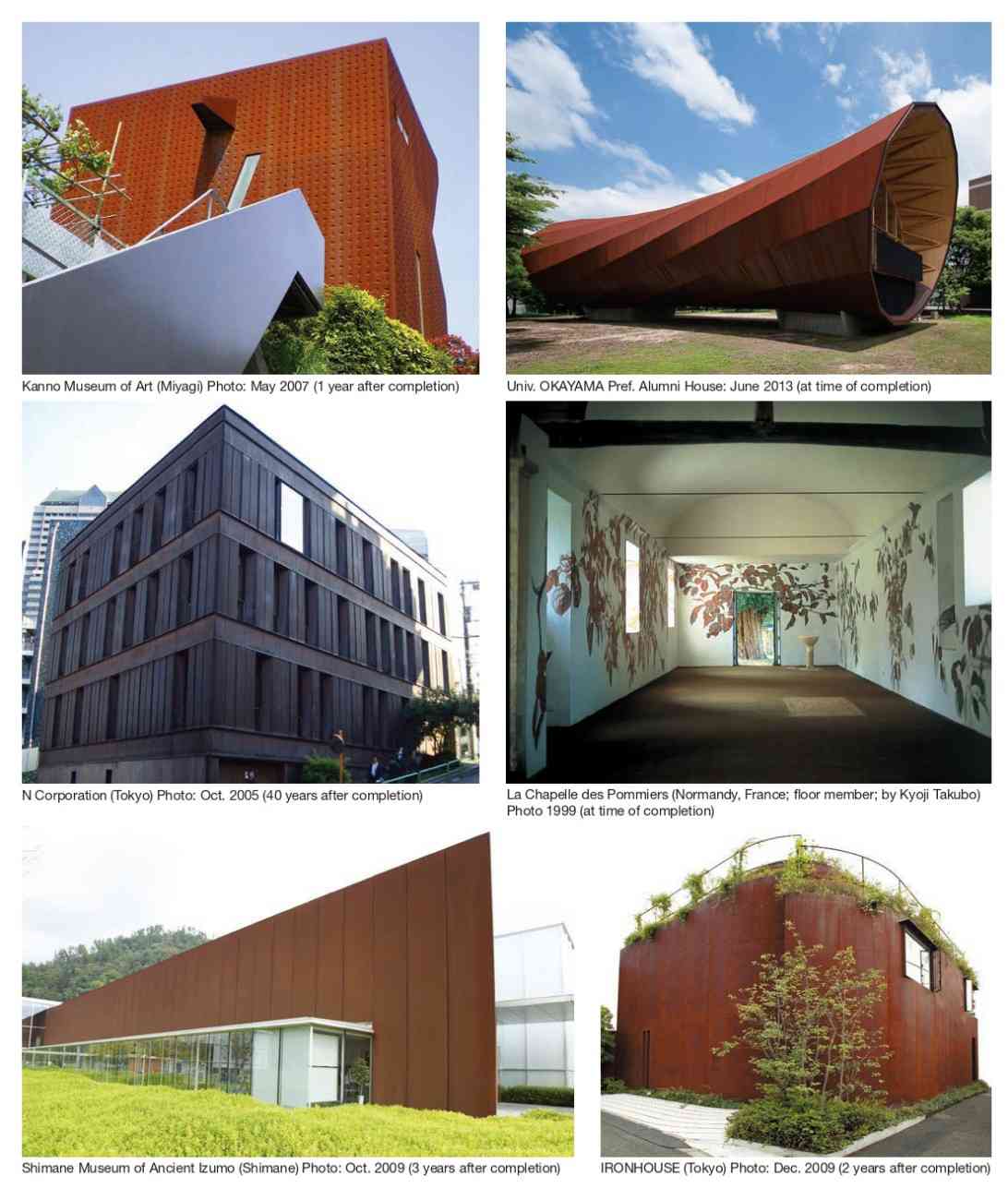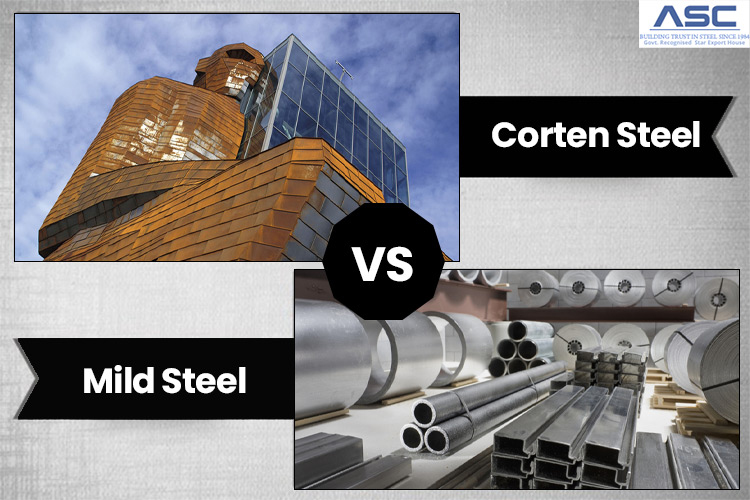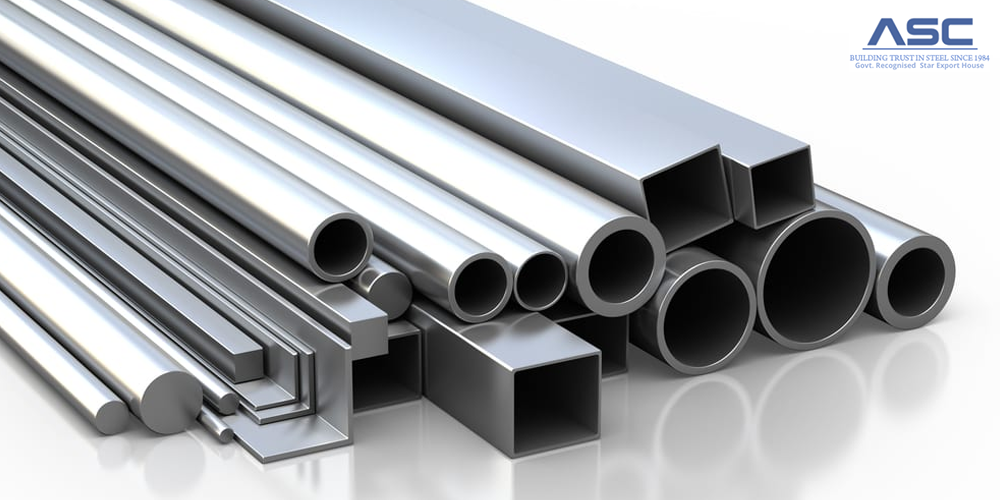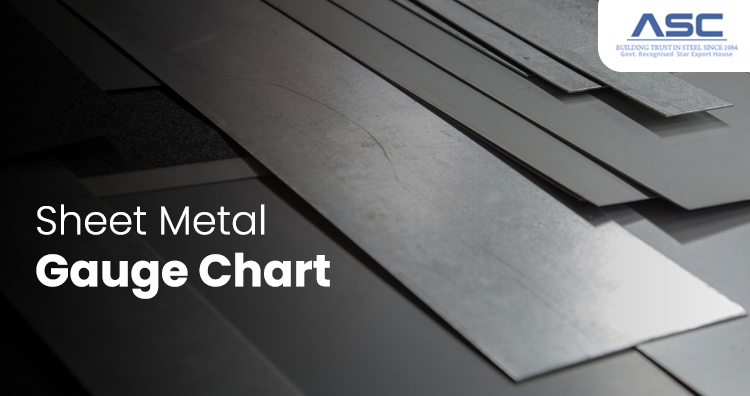What is COR-TEN Steel? Know Corten Steel Features, Types , Applications & Uses
by AMC
Posted on November 24, 2022 at 10:20 AM

What is Corten Steel?
Corten Steel (also known as weathered steel) is a category of steel alloys that are commonly used in outdoor construction. Corten Steel was designed to eliminate the need for painting, and if left outside and exposed to the elements, it will rust in a matter of months.
Cor-ten Steel Features

Cor-ten Steel Application Example


Uses of Cor-ten Steel

1.Garden and Landscape Design:From Planter boxes to landscape edging,
there are many
ways to shape and decorate an outdoor space with weathering steel. In fact, The Wall Street Journal
identified cor-ten as a top trend in landscape design.
2.Roofing and siding:
Weathering steel corrugated and profile panels, which are made from ASTM
A606-4
and
A588, are often
used to build roofs and building walls. For example, the office building for Amardeep Steel was made
of cold-rolled Corten steel. ASTM A606-4 corrugated rib panels were used to make the building's
exterior walls.
3.Sign posts:

Because of the protective patina, Corten steel sign posts are made to last 30 years longer than regular steel posts. Plus, they look great in the outdoors. Sign posts made of steel that doesn't rust are often used for traffic signs and to mark the end of vineyard rows.
4.Security solutions Corten steel is ideal for security applications such as gates, fences, and bollards. The rusty patina that the steel develops over time mixes nicely in outdoor places such as playgrounds, parks, farms, and vineyards, as it does in other weathering steel applications.

5.Outdoor sculptures: Weathering steel has grown in popularity for usage in outdoor sculptures. Sculptors use weathering steel's corrosion resistance, availability, fabricability, and look to create a variety of eye-catching and appealing works of art.
To learn more about the applications of Cor-Ten steel, read our article on Corten Steel Uses
COR-TEN Steel Specifications

COR-TEN Steel Chemical Composition

Types of COR-TEN Steels
Normally, two types of weathering steel are produced. These are also known as COR-TEN A and COR-TEN
B. The primary distinction between the varieties is the quantity of P alloyed in the composition.
COR-TEN A
is normally manufactured as a sheet or coil and is used in cladding and ductwork.COR-TEN
B
is more often manufactured as a plate, structural segment, or tube.
The weather resistance of COR-TEN steels is based on the oxide coating, or patina, that forms on the
surface of the steel and is dense and practically impenetrable to O2 as a result of the alloying
elements. If the surface is alternately wet and dry, the patina forms about 18 to 36 months under
normal weather circumstances. The patina is initially a reddish brown color, but it darkens over
time.
Patina occurs faster and is darker in color in industrial surroundings than in rural areas.
Chlorides in maritime conditions inhibit the production of the protective patina and can interfere
with the intrinsic behavior of COR-TEN steel. As a result, COR-TEN steel should not be utilized near
the sea or in places where the air has a significant concentration of chlorides. In the case of
open-air constructions, the slow corrosion rate is accounted for by adding corrosion allowance to
the nominal thickness.
Advantages of COR-TEN Steels
COR-TEN steel is resistant to air corrosion, allowing it to be utilized without paint in many
structural / architectural applications such as bridges, some open-frame buildings, transmission
poles, and sculptures. COR-TEN steel also possesses high temperature properties, making it an
excellent material for various flues, chimneys, and high temperature ducting. COR-TEN steel's
corrosion resistance gives it significant benefits over other metals for structures exposed to the
elements. These are provided below.
- Low maintenance COR-TEN steel is appropriate for bridges and other structures with difficult or dangerous access and where future disruption must be kept to a minimum. The only maintenance required to maintain the structure's continued performance is inspection and cleaning.
- Start up cost benefits The savings from not having to use any protective coatings or paints more than offsets the additional material cost of the COR-TEN steel. Weathering steels, for example, are around 5% less expensive than traditional painted steel alternatives in bridges.
- Project life cost benefits Nominal maintenance requirements of COR-TEN steel structures significantly reduce maintenance operations costs and potential indirect costs of traffic delays in the case of bridges.
- Construction Speed Because COR-TEN steels do not require painting on-site or in the fabrication shop, construction activity is expedited.
- Aesthetic appeal The appealing appearance of mature COR-TEN steel frequently combines well with the surroundings. With age, its appearance changes and improves.
- Environmental benefits Use of COR-TEN steel eliminates the need for blast cleaning and VOC laden paints.
- High temperature benefits Steel can oxidize at temperatures above 400 degrees Celsius. The use of COR-TEN steels can help to reduce this. COR-TEN steels develop a protective patina at temperatures above 400 degrees Celsius. A typical improvement is a temperature increase of 50 degrees Celsius over the comparable loss in cc-Mn steels. Above 450 degrees Celsius, COR-TEN steels are not acceptable for use in substantial load bearing parts.
Corrosion
Corrosion is the chemical or electrochemical degradation of construction materials caused by external factors. Corrosion is a property of all materials. In the case of steel, this leads to rusting. Steel's rusting behavior is determined by its chemical makeup, the environment, structural concerns, and a proper building design. Weathering steels are alloyed with minor amounts of Cr, Ni, Cu, and P to control corrosion behavior. Figure 2 depicts a comparison of the corrosion rates of COR-TEN steel and plain C steel.

Fig 2 Comparison of the corrosion rates of COR-TEN steels and plain C steels
The environment also has a considerable influence on the corrosion behaviour of the steels. Corrosion rates of COR-TEN steels in different environments are shown in Fig 3.

Fig 3 Corrosion rates of COR-TEN steels When the surface of COR-TEN steel is exposed to outdoor air, the O2 and moisture in the air produce a compact oxide layer, patina, developing on the surface, thus preventing the further propagation of corrosion. Fig 4 illustrates the difference between the corrosion rates of general structural steels and COR-TEN steels. There is difference between the corrosion rates of general structural steel and COR-TEN steel. Cyclical corrosion loss represents the change in weight/ reduction of thickness which occurs when a protective oxide layer fails to develop. The corrosion cycle of steel consists of steel oxidizes – the rust layer protects – wears off – the steel surface oxidizes again, etc. In COR-TEN steel, the initial corrosion rate remains high until the protective oxide layer prevents further oxidation. The actual corrosion loss is low.

Fig 4 Comparison of corrosion rates of COR-TEN steel and structural steel Forming COR-TEN steel, like conventional structural steels of the equivalent grades, can be cold formed. Successful shaping necessitates good workshop technology from the steel product's manufacturer. Worn tools, insufficient lubrication, plate surface flaws, and cutting burrs can all degrade quality. Shot blasting can also be harmful.
Bending with the axis transverse to the principal rolling direction is desirable for strip rolled items. Exacting forming procedures are easier to carry out either by warm forming at temperatures below 600 degrees Celsius or by hot forming at temperatures ranging from 800 degrees Celsius to 1050 degrees Celsius.
Can Corten Steel be Welded?
Welding on corten steel is identical to welding on low carbon steel. The sole precaution welders must take is with regard to the filler or electrode, which differs from mild steel. When it comes to welding electrodes for weathering steel, AWS E7018 is the best option. The electrode used is determined by two factors: needed strength and code requirements.
Corten Products & Applications
|
Acoustical Panels |
Buses |
Door (Water-cooled) |
Open Bridge Deck |
Ski-tow Towers |
Tanks |
|
Agricultural Equipment |
Cable Guards |
Exhaust Fans - Industrial |
Outdoor Signboard Supports |
Snow Plow Parts |
Towboats |
|
Air Conditioning Equipment |
Cable Trays |
Flash Chamber - Evaporators |
Outside Storage Racks |
Spray Dryers |
Traffic Signal boxes/Lights |
|
Airport Runway Lights |
Cladding |
Floor Parts |
Pipe - Structural |
Stack/Stacks Liners |
Transformer Shells |
|
Air Pre heaters |
Concrete Forms |
Frame Expansion Joints |
Pole Line Hardware |
Stack Regulators |
Transmission Towers |
|
Amusement Park Rides |
Containers |
Door (Water-cooled) |
Pollution Control Equipment |
Stairs and Handrails |
Trash barrels |
|
Auto Transport Loading Ramps |
Conveyors |
Door (Water-cooled) |
Pontoons/Pontoon Grating |
Steam-generating Apparatus |
Trenching Machinery |
|
Baghouse Dust Collectors |
Dams and Locks |
Exhaust Fans - Industrial |
Pumps and Pump Parts |
Storage Containers |
Trolley Cars |
|
Bins |
Derricks |
Flash Chamber - Evaporators |
Railroad Rolling Stock |
Stove Parts |
Trucks |
|
Blast Plates |
Ductwork |
Floor Parts |
Open Bridge Deck |
Structural Conveyor Tubes |
Tubing - Mechanical |
|
Blowers |
Electric Dust Precipitators |
Ladders |
Railroad Signal Towers and Boxes |
Tanks |
Ventilation Louvers |
|
Bolts and Nuts |
Earth-moving Equipments |
Light Standards |
Rakes - Classifier |
Towboats |
Wheelbarrows |
According To Following Standard & Specifications:
|
EN 10155 |
NFA 35-502 |
SEW 087 |
UNI |
BS 4360 |
JIS G3114 |
ASTM |
INDIAN STANDARD |
OTHERS |
|
S235J2W |
E24 W 4 |
WTSt 37-3 |
Fe 360 DK1 |
WR 50 A |
SMA 50 AW |
Weathering Steel-A |
IRSM41-97 |
09CUPCRNI-A |
|
S355J0WP |
E36 WA 3 |
WTSt 52-3 |
Fe 510 C1K1 |
WR 50 B |
SMA 50 CP |
Weathering Steel-B |
SAILCOR |
9CRNICUP234 |
|
S355J2WP |
E36 WA 4 |
|
Fe 510 D1K1 |
WR 50 C |
|
A242 Type1 |
|
10HNAP, |
|
S355J0W |
E36 WB 3 |
|
Fe 510 C2K1 |
|
|
A 588 Gr.B |
|
10XHAP |
|
S355J2G1W |
E36 WB 4 |
|
Fe 510 D2k1 |
|
|
A 588 Gr. A |
|
10 KHNDP |
|
S355J2G2W |
|
|
|
|
|
A 588 Gr. C |
|
JIS G 3125 SPA-H |
|
S355K2G1W |
|
|
|
|
|
A 709 Gr. 50 W |
|
15217 |
|
|
|
|
|
|
|
|
|
17G1S |

Difference Between Corten Steel and Mild Steel
Mild steel, also known as carbon steel, is the most prevalent type of steel today. Mild steel is less expensive and, once sealed, will keep a naturally rusty appearance.

